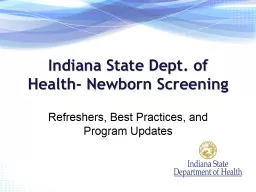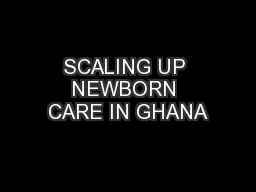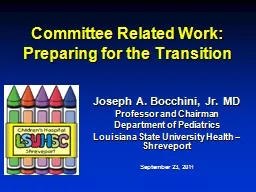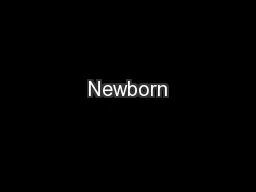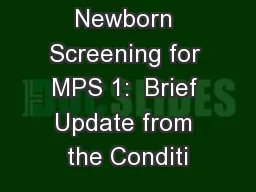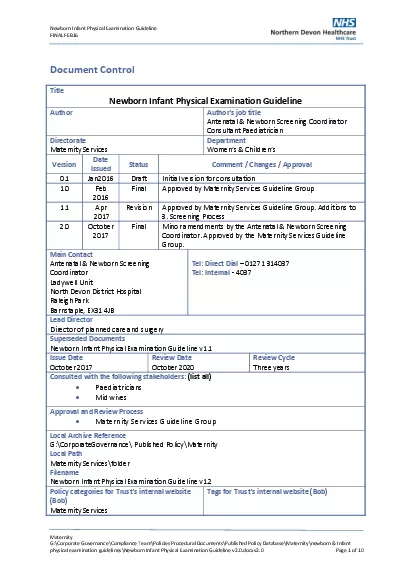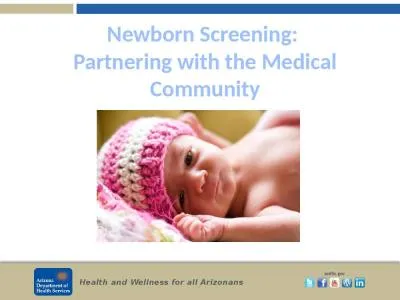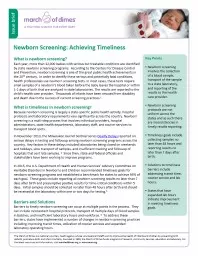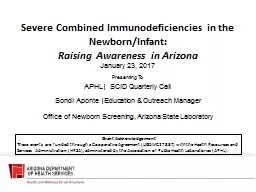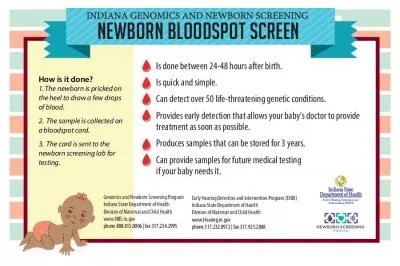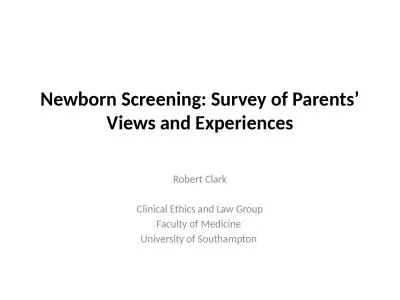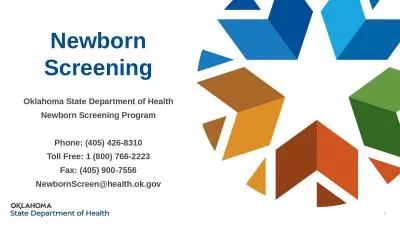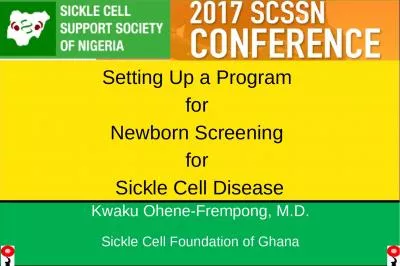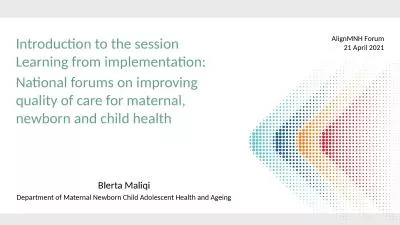PPT-Indiana State Dept. of Health- Newborn Screening
Author : alexa-scheidler | Published Date : 2018-11-06
Refreshers Best Practices and Program Updates Mission of ISDH Newborn Screening Program Ensure that every newborn in Indiana receives statemandated screening for
Presentation Embed Code
Download Presentation
Download Presentation The PPT/PDF document "Indiana State Dept. of Health- Newborn S..." is the property of its rightful owner. Permission is granted to download and print the materials on this website for personal, non-commercial use only, and to display it on your personal computer provided you do not modify the materials and that you retain all copyright notices contained in the materials. By downloading content from our website, you accept the terms of this agreement.
Indiana State Dept. of Health- Newborn Screening: Transcript
Download Rules Of Document
"Indiana State Dept. of Health- Newborn Screening"The content belongs to its owner. You may download and print it for personal use, without modification, and keep all copyright notices. By downloading, you agree to these terms.
Related Documents

